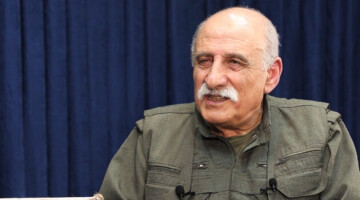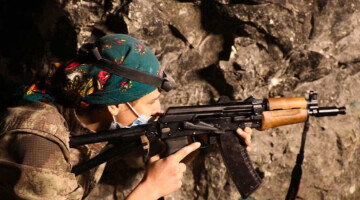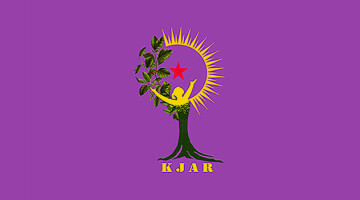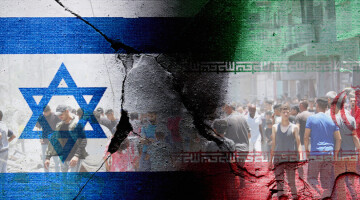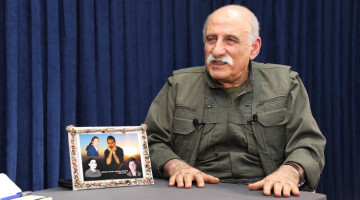Turkey’s policy of ethnically cleansing Afrin by killing former citizens, expelling them from the area and, ultimately, replacing them with other people literally “planted” in the city and wider area, resembles the so called Plantation of Ulster. In 1609, during the reign of King James I, the organised colonisation of the Irish province of Ulster took place. Most of the colonists, or planters, came from Scotland and England. The plantation had already started in 1606, but it was officially acknowledged and pursued from 1609.
The idea behind the Plantation of Ulster was the same behind President Erdogan’s plan to “turkify” the region of Afrin: King James I ultimately saw the Plantation as a way of controlling, anglicising and “civilising” Ulster. Indeed, England had always tried to colonised its neighbour Ireland by any mean necessary: not just militarily, but through several plantations and also by giving Irish lands to British military commanders as a gift in return for their services to the Crown.
Turkish President Erdogan wants colonize Afrin in order to secure its loyalty to Ankara and in order to achieve this he is prepared to alter the demographic composition of the territory. He knows indeed that he would not succeed in submitting the people of Afrin to his will, and therefore despite bombing and killing civilians he ordered the invasion of the city and once inside the centre he let loose the criminal and murderous Islamic gangs he has been a loyal friend and ally throughout the entire war in Syria.
Those gangs have been allowed and given the green light to kill, torture and loathing.
But the plan is more sophisticated than that: it includes changing the demographic composition and in order to achieve that in the shortest possible time, Erdogan has already found and prepared the new bunch of colonizers.
The Plantation of Ulster was presented to James I as a joint English and Scottish, venture to 'pacify' and 'civilise' Ulster. James had been King of Scotland before becoming King of England too and needed to reward his subjects in Scotland with land in Ulster to reassure them they were not being neglected now that he had moved his court to London. In addition, long-standing contact and settlement between Ulster and the west of Scotland meant that Scottish participation was a practical necessity.
Erdogan likewise wants to keep a foot in the Northern Federation of Syria via the colonisers he would like to see “planted” in Afrin. What Erdogan is targeting are Kurds, but also, as TEV-DEM pointed out, the whole project envisaged not just for the North of Syria but for the whole country.
As Hevi Mustafa, co-president of the Executive Council of Afrin, was writing during the Turkish invasion, “Our region is religiously and ethnically diverse. Our population includes Kurds, Arabs, Armenians, Yazidis and Alawites. Many of us are descendants of the survivors of genocides that were committed by Turkish states against the non-Turkish peoples during and after World War I. All of these communities have refused to leave Afrin despite the threat from the Islamic government in Turkey and the jihadist groups associated with it that publicly threaten us with ethnic cleansing. All of these communities are working together to build a democratic alternative in Syria”.
Hevi Mustafa was then pointing out the real aim of the Turkish President invasion: “Erdogan wants to destroy this freedom. Though ostensibly a U.S. ally, Erdogan is not ashamed to use jihadist groups to eliminate Afrin as a democratic alternative. Not only did Erdogan allow al-Qaeda to grow along Turkey’s border with Idlib, but he has also coordinated with al-Qaeda to facilitate the entry of the Turkish troops into our region. Erdogan doesn’t fight al-Qaeda — he works with them”.
The Plantation of Ulster had come after other Plantations, not exactly successful, as Irish natives never accepted passively the occupation of their land. Indeed, this continues to this day.
A rebellion of natives succeeded in destroying the previous Munster Plantation, during the Nine Years’ War. This prompted James I to confiscate all of the land (rather than settling the planters in isolated pockets of land confiscated from the Irish), and then redistributed it to create concentrations of British settlers around new towns and garrisons.
Furthermore, the new landowners were explicitly banned from taking Irish tenants and had to import workers from England and Scotland. The remaining Irish landowners were to be granted one quarter of the land in Ulster. The peasant Irish population was intended to be relocated to live near garrisons and Protestant churches.
The planters, moreover, were barred from selling their lands to any Irishman and were required to build defences against any possible rebellion or invasion. The settlement was to be completed within three years. In this way, it was hoped that a defensible new community composed entirely of loyal British subjects would be created.
Indeed, the Plantation of Ulster did not succeed in the long term. The reaction of the native Irish to the plantation was generally negative and the attempted conversion of the Irish native to Protestantism was generally a failure.
In the 1640s, the Ulster Plantation was thrown into turmoil by civil wars that raged in Ireland, England and Scotland. The wars saw Irish rebellion against the planters, twelve years of bloody war, and ultimately the re-conquest of the province by the English parliamentary New Model Army that confirmed English and Protestant dominance in the province. Yet more rebellions were to come and indeed the Plantation continued its life all but in a quiet way.
Indeed, the British policy towards Ireland helped creating a society segregated between native Catholics and settler Protestants in Ulster and created a Protestant and British concentration in north east Ireland. In the end the Plantation is one of the long-term causes of the Partition of Ireland in 1921, as the north-east remained as part of the United Kingdom in Northern Ireland. The history of the twentieth century would be characterized in Ireland by yet more rebellion up to the final stage of the conflict, the so-called Troubles, which culminated in the Good Friday Peace Agreement signed in 1998, after the permanent ceasefire called by the IRA (Irish Republican Army) in 1994.
Today Ireland is still divided, but Irish republicans, headed by Sinn Féin, are today closer than never to the celebration of a referendum on Irish Unity.
Knowing the history of Kurds and their resistance, it is not difficult to foresee that Erdogan’s version of the Plantation is doomed to failure.
An early 17th-century poem by Irish bard Lochlann Óg Ó Dálaigh goes like that: "Where have the Gaels gone?", and adds: "We have in their stead an arrogant, impure crowd, of foreigners' blood". The bard was lamenting the plantation, the displacement of the native Irish, and the decline of Gaelic culture.
Kurds and their institutions are already echoing the old bard’s voice and they are determined not to let Turkish ethnic cleansing plans to succeed.



